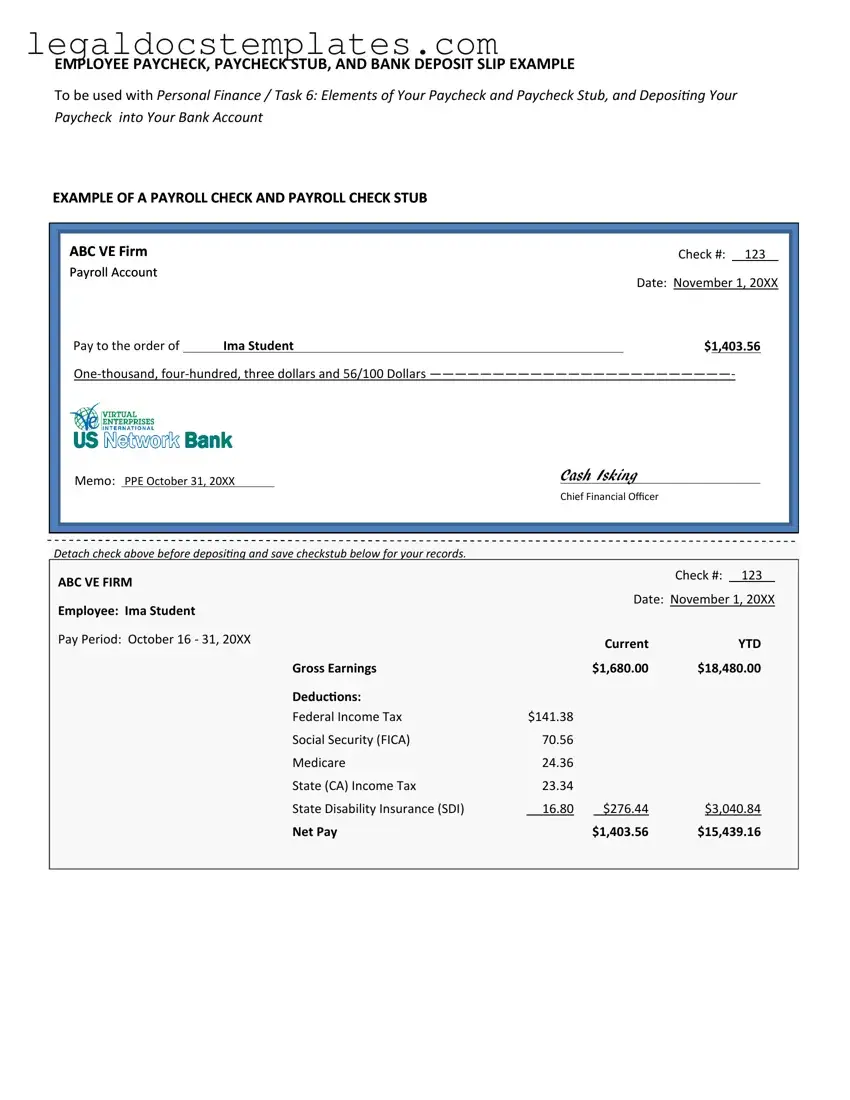The Direct Deposit Authorization form is quite similar to the Payroll Check form, as both are essential payroll documents. While the Payroll Check form facilitates the issuance of a physical paycheck to an employee, the Direct Deposit Authorization form collects an employee’s bank account details to transfer their earnings directly into their bank account. Both forms are critical in ensuring employees receive their compensation in a timely and accurate manner.
An Employment Application is another document that bears similarities to the Payroll Check form, as it is an initial step in the employment process. While the employment application gathers personal and professional information from potential employees to make hiring decisions, the Payroll Check form comes into play after hiring to manage the employee's compensation. Both are pivotal in the recruitment and compensation process.
The W-4 form, or Employee’s Withholding Certificate, is closely related to the Payroll Check form. Both are used by the payroll department to accurately process employee pay. However, the W-4 is specifically designed for employees to indicate their tax withholdings, which directly affects the amount indicated on a Payroll Check by adjusting the net pay after taxes.
Time Sheets are also similar to the Payroll Check form as both documents are integral to the payroll process. Time Sheets track the hours an employee has worked during a pay period, which are necessary to calculate the gross pay for hourly employees. This calculated amount is what is eventually reflected in the Payroll Check, ensuring employees are compensated for their time and effort.
The Payroll Advance Request form shares similarities with the Payroll Check form, as both involve the payment of wages. However, the Payroll Advance Request form is used when an employee requests a portion of their wages in advance of the regular payday. The amount advanced is then deducted from the next Payroll Check, ensuring the advance is accounted for in the employee’s earnings.
Benefits Enrollment forms are somewhat similar to the Payroll Check form since both affect an employee's net pay. While Benefits Enrollment forms allow employees to select health insurance, retirement plans, and other benefits which might require deductions from their gross pay, the effects of these selections become apparent in the Payroll Check form through adjusted net pay reflecting those deductions.
The Employee Update Form closely relates to the Payroll Check form in the administrative sphere, with both being vital for personal record keeping. This form is used when an employee needs to update their personal information such as address changes or marital status, which can have direct implications on tax withholdings or direct deposit accounts, thus indirectly influencing the details on a Payroll Check form.
Expense Reimbursement forms share a functional similarity with the Payroll Check form. Employees use Expense Reimbursement forms to get repaid for out-of-pocket expenses made on behalf of the company. Though not direct compensation for services like a Payroll Check, these reimbursements may appear as additional amounts on a Payroll Check or be processed similarly through payroll.
An Overtime Authorization form somewhat parallels the Payroll Check form in terms of wage management. This document is required when an employee works beyond their standard hours and seeks approval for overtime pay. The approval of overtime directly affects the gross amount on the subsequent Payroll Check, highlighting their interconnectedness in compensating for extra work hours.
Last but not least, the Performance Review form, while primarily focused on assessing an employee’s job performance, can influence the contents of a Payroll Check form. Outcomes of these reviews may lead to salary adjustments, bonuses, or promotions, which are then reflected in the Payroll Check as increments in pay, demonstrating another crucial link between employee evaluation and compensation documentation.


